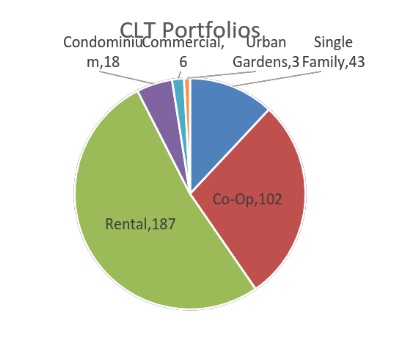
Much of California faces a serious housing crisis. For both renters and owners, L.A. housing is among the least affordable in the United States. For working families, the lack of affordable housing can mean unreasonable rents, displacement, and even homelessness.
While there are numerous community groups building new affordable housing, new supply is nowhere near enough to meet demand. Most affordable housing in Southern California is not permanent, but features covenant restrictions that last for several decades, then expire.
While some push for legislative solutions - from allowing more ADUs (auxillary dwelling units) to relaxing onerous parking requirements - there does not appear to be a magic bullet solution that will solve all of L.A.'s housing problems.
A piece of the affordable housing solutions puzzle not widely known in Southern California is the Community Land Trust, or CLT.
CLTs have been around since the 1960s. They are active around the world, prominently in the U.S., Canada, and England. There are more than a dozen CLTs in California.

CLTs come in several flavors, but generally they are community non-profit organizations that buy and hold land, permanently removing it from the speculative real estate market. Because the community owns the land, the community calls the shots. Under other more typical publicly-funded housing models the affordability restrictions typically expire in 10, 20, 30 years; housing on CLT-owned land is made permanently affordable.
CLT land uses tend to focus on urban affordable housing, but they also manage land that is rural, agricultural, commercial, and open space. Many CLTs focus on home ownership, though they also do affordable rental and cooperative housing.
The way a CLT model typically works is as follows:
- Similar to other non-profits, CLTs raise money via membership, donations, grants, etc.
- CLTs purchase land. Many CLTs purchase existing housing (often run-down in order to fix up), though some CLTs purchase undeveloped/underdeveloped land where they build new housing.
- The land is permanently owned by the CLT.
- The CLT makes the land available to residents, through a 99-year ground lease. In some cases, residents purchase the home (the building on the land), which becomes very affordable as the speculative value of the land is not part of the purchase. In other cases, the lease goes to a cooperative which owns the building collectively, and provides affordable housing to co-op share owners (and sometimes renters, too.) In some cases, the CLT can manage the property and rent it out affordably.
- In all cases, the affordability is maintained in perpetuity. For example, when a homeowner moves out of a CLT-owned home, they do not receive market rate property appreciation, but receive what they paid in, plus some interest based on a formula more-or-less tied to inflation. Then the home is made available to a new owner, at an affordable price.
Typically CLT boards consist of three more-or-less equally weighted constituencies: CLT housing residents, community leaders, and housing advocates/experts.
With the community owning land, removed from the speculative market, the CLT model promotes stability and continuity for residents. Though it is probably not feasible for CLTs to purchase entire neighborhoods to prevent all displacement in a gentrifying area, CLT buildings can lessen some the most rapid and worst swings.
Many CLTs, including ones in Burlington, Vermont, and Durham, North Carolina, have operated nimbly in depressed rust belt markets. They purchase run-down, abandoned, nuisance, or substandard housing at relatively cheap prices. They fix these up, sometimes utilizing labor from community volunteers, then sell them affordably.
That depressed-market model is not quite applicable to perpetually overheated housing markets in coastal California. Nonetheless CLTs have been able to make inroads in L.A., San Diego and the Bay Area. The San Diego Community Land Trust is currently developing 25 units of affordable homeowner housing. The Berkeley-based Northern California Community Land Trust owns and manages dozens of units of affordable rental and home-ownership housing.
TRUST South L.A., in addition to transportation advocacy efforts Streetsblog readers may be familiar with, is a CLT. TRUST is working on several permanently affordable housing projects including the Slauson and Wall project, to house 120 families, and Rolland Curtis Gardens which preserves 48 units of affordable housing.
I live in a Los Angeles Eco-Village building that is owned by the Beverly Vermont Community Land Trust. The BVCLT is focused on providing affordable housing within a walkable distance from the Beverly Vermont Metro Red Line Station in Koreatown. BVCLT currently owns three apartment buildings (50 housing units, all below market rate, with a dozen covenanted for specific low income categories) and manages a community garden site owned by the school district. Two of the BVCLT buildings are leased to the Urban Soil/Tierra Urbana Limited Equity Housing Co-op, which provides share-owner and renter housing. BVCLT manages the third building as affordable rental housing. BVCLT is also expected to own Eco-Village's planned new affordable housing development.
Community Land Trusts may not solve all of L.A.'s affordability issues, but they can help communities get a leg up by owning and controlling their own land.







